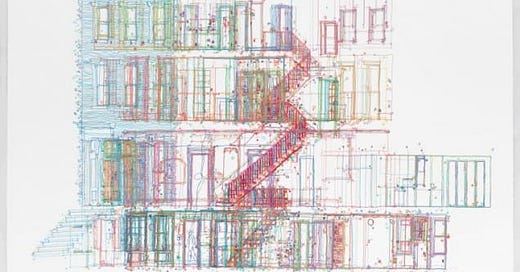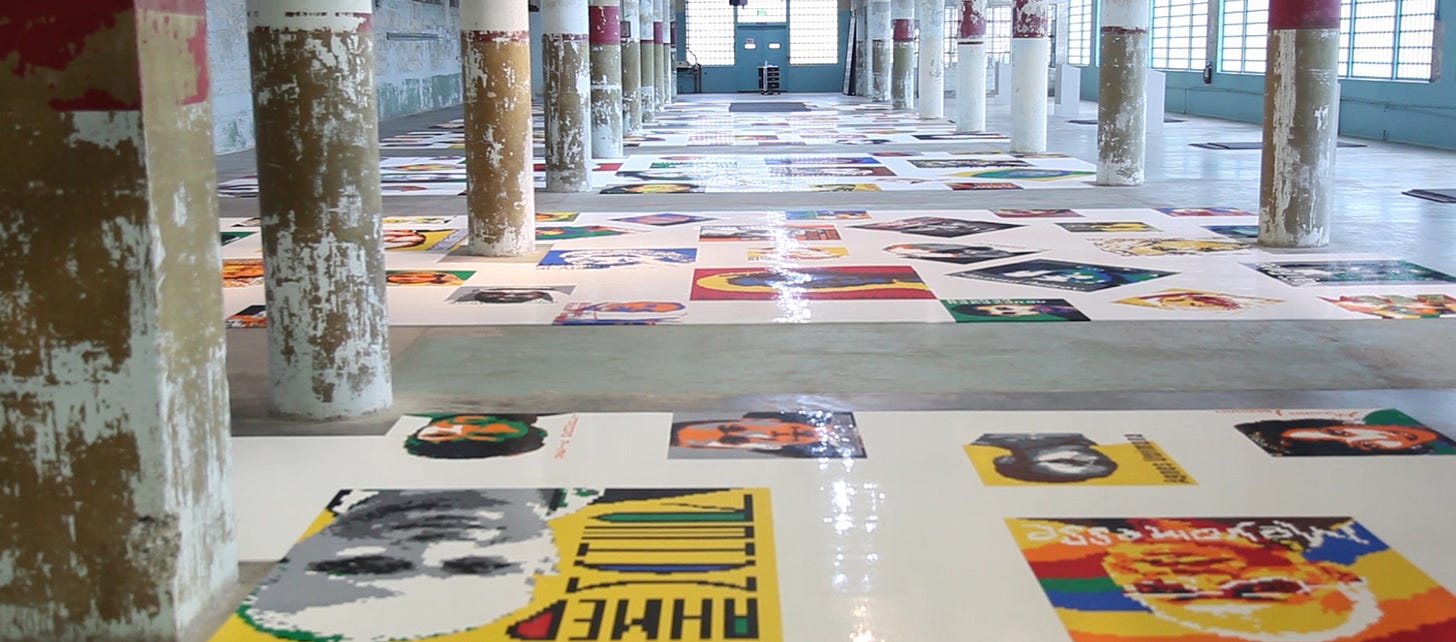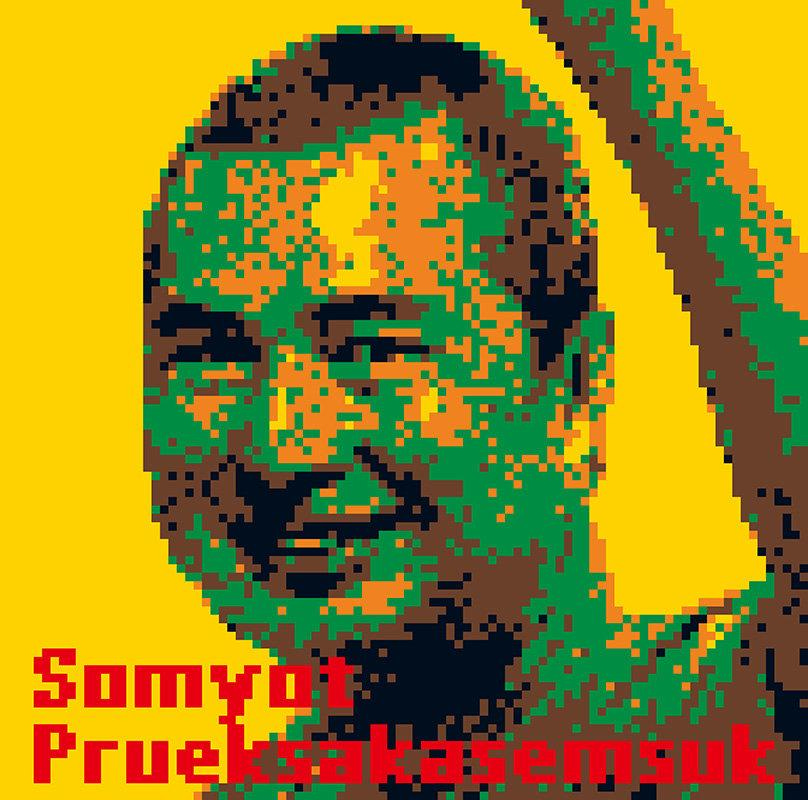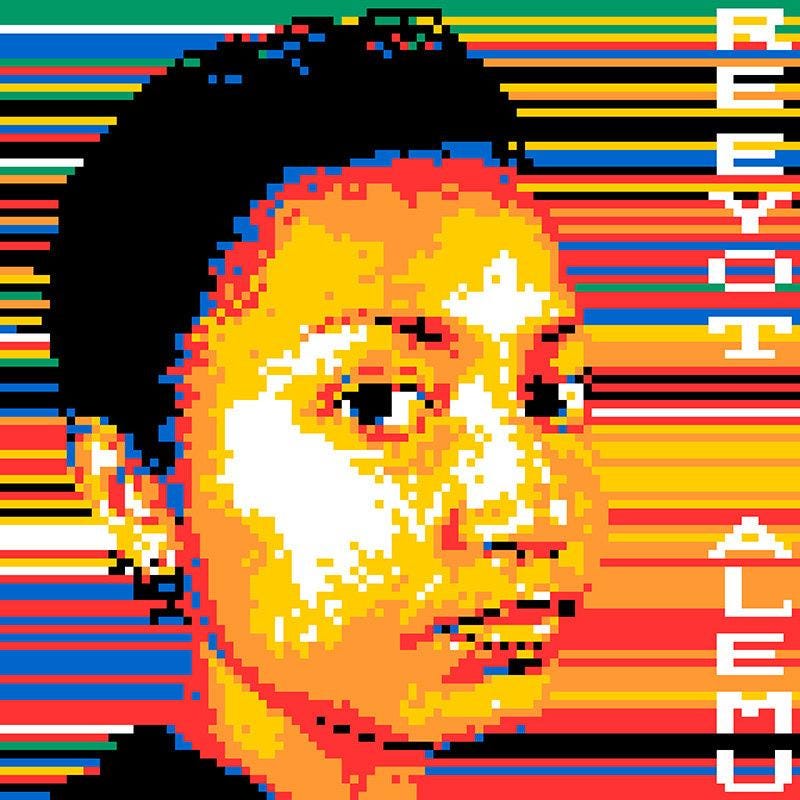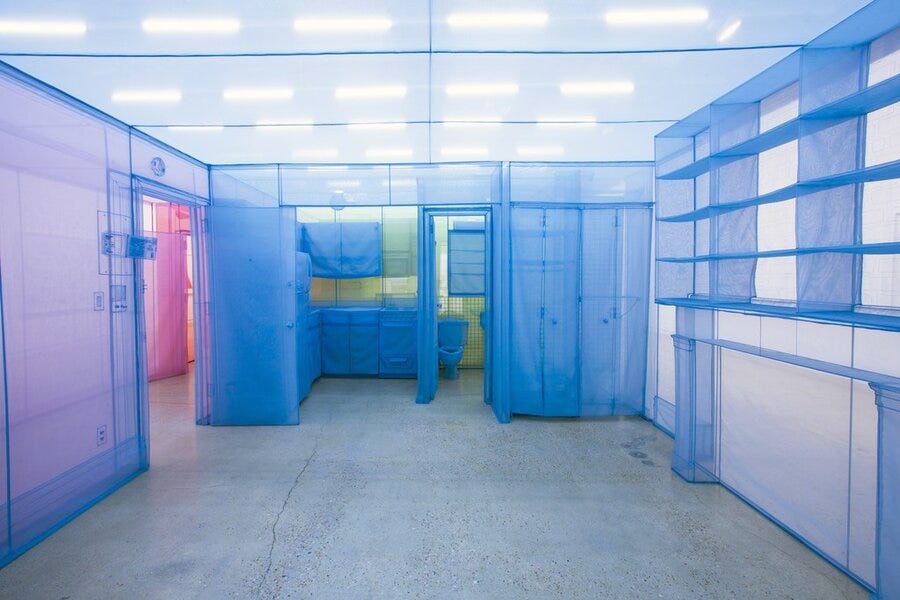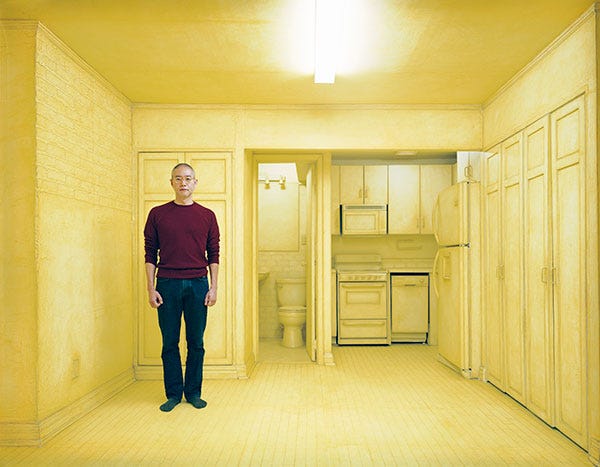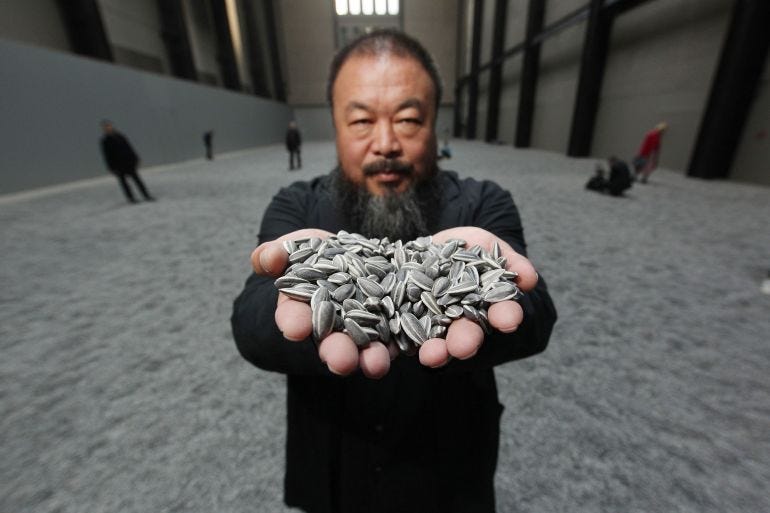Note: my apologies for getting this post out a day late. Over the last few days it has been necessary to give my complete attention elsewhere.
Do Ho Suh, 348 West 22nd Street, New York, NY 10011, USA, 2017. Work on paper.
Both Ai Weiwei’s Trace and Do Ho Suh’s 348 West 22nd Street transform and work in conversation with the spaces in which they are installed. Both works, constructed out of anonymous materials, investigate the relationship of the personal and the collective. Both seem to rely on the active imagination of the viewer: they require participation as you physically walk among them.
Ai Weiwei’s Trace (2014) is a large-scale installation, originally in Alcatraz, depicting the portraits of scores of prisoners of conscience. The portraits are constructed with lego bricks on panels on the floor of the former prison. Each panel has its own face. The colors are bold, in contrast to the persistent greyness of the prison walls and gates. It seems impossible to not consider the work in the context of where it was (re)constructed, or that Weiwei himself could not oversee that reconstruction in person at the time, as he was not allowed to leave China.
Visitors to the work have to walk between the portraits. Doing so must make the viewers ask questions: who are each of these people? Where and why have they been incarcerated? Perhaps the legos convey a sense of mass-reproduction. They certainly are ironic: a child’s toy in a place adults were incarcerated for life.
Do Ho Suh’s 348 West 22nd Street (2015) is an exact, full-scale replica of the artist’s New York apartment. The material is hand-sewn fabric. The entire apartment has been replicated, even the radiator and the appliances beside the stove. The fabric, by its very nature, is transparent and transportable. Regarding one of his other house projects, Do Ho Suh said he wanted to carry his house with him all the time. This piece makes me wonder how through representation, we can consider issues of longing, whether the longing is for a former home, one’s family, or simply secure sleep. That this is an exact replica is significant. Maybe measuring a place allows one to fully occupy the memory of a space. This work investigates the concept of personal space. Does the personal become collective once it is entrusted to public space?
Do Ho Suh
Trace was constructed inside an abandoned space formerly dedicated to placing people where they could not be seen, while 348 West 22nd Street is a construction inside a space designed for looking. With 348 West 22nd Street, the meaning is not only in the constructed piece but in the transparency of the sewn material. In the same way, Trace conveys meaning through its material. Both works are conceptual and political. Both operate through replication. Both, in a sense, imbue the collective with the personal. Both ask us to involve ourselves in viewing them. Otherwise the absences they depict cannot be given presence.
Weiwei says, at the end of this interview for the Alcatraz installation, that he does not see art as an end “but as a starting point”. Both Weiwei’s Trace and Do Ho Suh’s 348 West 22nd Street are starting points for political and personal reflection. This is art we can walk into and through. In a time of housing crises and displaced peoples, they ask us to consider the politics of place, and how places can be art. They do this in part by unfixing places, as well as the people that once occupied those places. By doing so, they allow those places and people to haunt us.
Ai Weiwei

